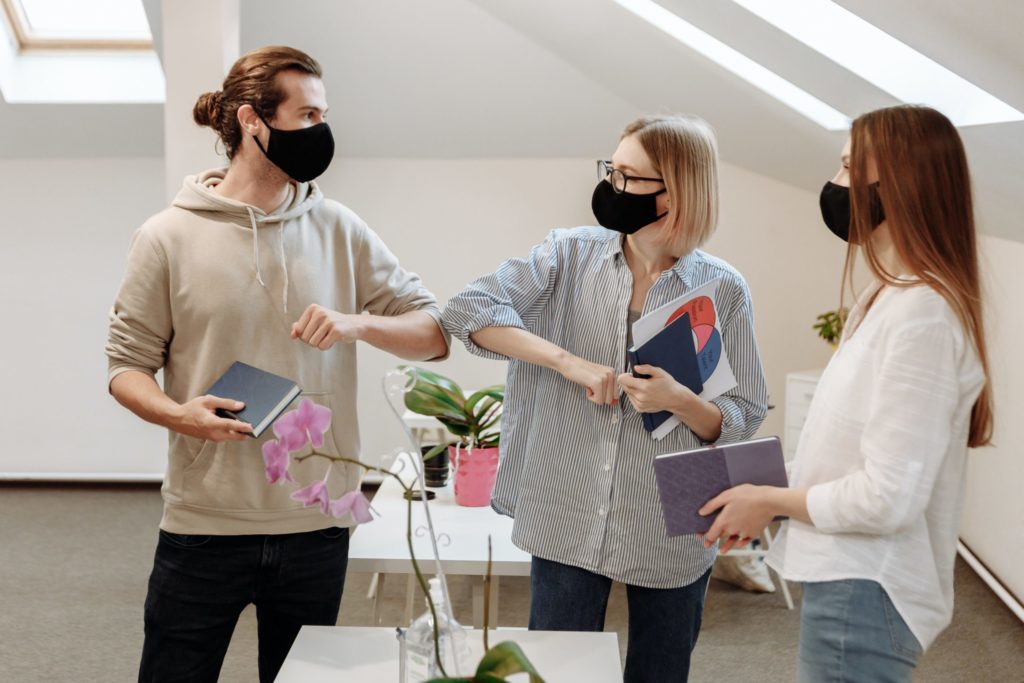In the middle of last year’s self-isolation, I found myself pinned down to a hospital bed with severe COVID-19. While the experience proved life-altering in many ways, it was the aftermath that made me completely reevaluate my own and my team’s work-life balance and productivity in light of the pandemic that struck so close to home.
With 34 million of the U.S. population having already experienced COVID — which comes down to nearly a quarter of the country’s employed population, medical studies show that as many as three-quarters of people impacted by COVID face disturbing symptoms months after recovery. In a business environment, this means not just health complications but decreased productivity, poor performance, and weakened mental focus: factors that impact any company’s organization.
As a business executive and former COVID patient myself, I can testify that my work-life balance has radically shifted in the months following my recovery. Here is what the experience taught me about reclaiming the precious island of work-life stability around myself and my team.
Replace “hustle” with “hospitality”
A result-pressured “workaholic” workplace is one of the staples of so-called “hustle culture” — the concept of working yourself ragged to the business Olympus. Fortunately, it seems the trend is finally being recognized for what it is: a toxic misreading of true productivity.
For leaders, especially those working with COVID-impacted teams, it’s important to regularly check in on employees and eliminate any blockage people are facing in their daily work. I found that informal online chats on a bi-weekly basis are key to understanding what’s happening in my team’s work life. By checking in on team members individually, managers get the “behind the scenes” picture of their team’s performance. As a result, they can effectively eliminate struggles that most teams will encounter post-COVID.
Companies of all sizes will be surprised at how organizationally empowering human-centric leadership is. Understanding the work life challenges of individual employees helps leaders structure the whole team’s productivity without disruptions so more gets done faster than hustle culture would ever have it.
Define communication boundaries
“With the number of calls we’re on these days, it feels like we’re call center operators, not programmers,” my team once told me. In the environment of remote work, the online calls/meetings overload is a struggle for many teams. However, after I got hit by COVID and underwent a long recovery process, revisiting the whole communications process with my team became not a luxury, but a necessity to keep my work life sane.
The best communication guideline for online workers is to make a checklist of “communication practices dos and don’ts” for the team. This isn’t just an incentive of best practices, but a reminder of boundaries. Rules make communication simpler for all teams but are a lifeline for those having employees still recovering (physically or mentally) from COVID.
Guidelines may include the following: 1) Before every online meeting, the organizer writes a detailed agenda and sets specific results to be expected 2) The organizer sends invites only to required people. FIY attendees should be included as “optional”. 3) The organizer sends Action Items following the meeting 4) Managers set fixed days and hours for ‘stacking’ important meetings, and free up time for urgent work (e.g., meetings Mondays, 12 PM-4 PM) 5) Avoid disruptive “checkered-pattern” meetings: 30-minute meetings followed by 30-minute work intervals.
Individual online communication guidelines should be drawn up in partnership with your team and based on their feedback. Consult your team on what their work-life balance lacks and what sort of online meeting habits would help with their mental and physical wellbeing.
Rethink outdated routines
Companies where employees have lived through COVID always face the struggle of a return to “normal” productivity. In my case, the recovery process started excruciatingly slow. Spending as much as an hour before the monitor, not to mention leading numerous weekly meetings proved a challenge. While eventually, the physical side of productivity went back to normal, it took a lot longer for the mental aspects to align back into focus as months in I found myself subject to panic attacks and previously unfamiliar stress.
Companies need to accept that their team members’ productivity and especially their mental health will not be the same post-COVID. Research shows that your team may suffer from severe fatigue, body aches/headaches, and brain fog for months after recovery– all directly influencing work performance.
For leaders, reclaiming productivity in employees who've experienced COVID means rethinking outdated and poor routines. Take a new look at ineffective working processes that your team just “kept going” with before. Rethink how you divide responsibilities. Delegating tasks that aren’t related to an employee’s or manager’s direct responsibilities. Make that anticipated leap to more agile practices or empowering horizontal leadership practices within your business.
Remind employees that you’re attentive to their physical and mental health — both in a regular or a work at home environment. Encourage work breaks for exercise or sports, plan safe and socially distanced team-building sports, yoga, and/or meditation sessions outdoors. If as a leader, you see productivity struggles in employees, talk to them individually and offer counseling or other help on behalf of the company.
The above practices may sound like an investment that businesses are in no obligation to make, but the ROI of such balanced care will pay off not only in better work-life balance and increased performance but in team loyalty for years to come.
About the author
Anna Miranchuk is Product Manager at MightyCall and the winner of Network Products Guide IT World Awards “Women in IT” category. A charismatic and thoughtful leader, she’s terrific at motivating the team and always ready to prove that success comes to those who dare to challenge convention.

